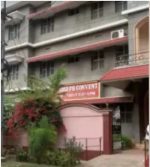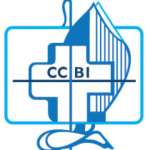By Felix Anthony
Neotan: A farmer in Arunachal Pradesh is on a special mission: Promote the writing system of his tribal dialect.
“My aim is to preserve our Tangsa language, which according to a recent study is marked as an endangered language,” says Wanglung Mossang, a villager in Changlang district of the northeastern Indian state
The 55-year-old farmer from Neotan village under Miao subdivision now conducts evening classes for college students in his efforts to promote the writing system.
“There are so many dialects spoken in Arunachal Pradesh. The Tangsa tribe alone has more than 40 sub-tribes with each having its own dialect without written form. All of them use Roman script,” Wanglung told Matters India.
The classes began on June 28 with 15 college graduates at Newman School in the same village.
“I am happy that many of our college graduates are attending this 15-day langue course. Once they learn the script they can teach their younger ones in their neighborhood,” Wanglung added.
The work on a common script for the Tangsa tribe began in 1990 by one Lakhum Mossang. However, his untimely death in 2020 brought an abrupt halt to his years of hard work, sacrifice and research efforts, Wanglung said.
After Wanglung picked up Lakhum’s pioneering work, the mission received new boost.
“Initially the script was meant only for the Mossang sub-tribe. However, in a historical meeting attended by all the sub-tribes of Tangsas on November 2, 2019, the script was unanimously accepted and declared as the common Tangsa Script,” Wanglung said.
The Tangsa script has 48 vowels and 31 consonants. There are four different tones and words have different meaning according to the tones.

“The script is not only beautiful to behold but entirely suitable for the language,” added Morey, who was responsible for converting the handwritten script of Lakhum Mossang to Lakhum Tangsa Script font style in Microsoft Word.
The script has been approved for inclusion in the next version of Unicode, an international encoding standard for use with language and scripts, by which each letter, digit, or symbol is assigned a unique numeric value that applies across different platforms and programs.
The students seemed excited at the end of the first day of learning. “We have been speaking in our dialect but writing it in English. Finally we can speak and write in our own dialect and it is a proud feeling,” said Blessy Mossang, a teacher in a private school in the district.
Although developed only recently, the Tangsa script is already converted into a mobile application to attract young people and students to learn the script.
“The Tangsa script is great unifying factor. The gap resulting from the language variations among all our Tangsa sub-tribes has been bridged by this script. Though we may speak differently, with this common script we can now read and write in one voice,” said Nemsi Mossang, a teacher of the village’s government school. “I will use my lock down time to teach this script to at least five children in the coming days.”
With this script development, the Tangsas becomes only the third tribe to have its unique written script among more than 50 dialects spoken in Arunachal Pradesh. The other two are Khampti and Wancho. While the Khampti script is traditional in use for 100s of years, the Wancho script was invented by Banwang Losu, a youth from Longding district, in early 2000s.
“Many young people of various tribes in Arunachal do not speak their own mother dialect. In the absence of a proper script, there is a danger of these beautiful dialects getting completely forgotten. May our humble efforts to preserve our dialect inspire others across the state,” Wanglung said.
The Tangsas, a scheduled tribe under the Indian Constitution, is the largest group in Changlang district, with an approximate 100,000 population.









